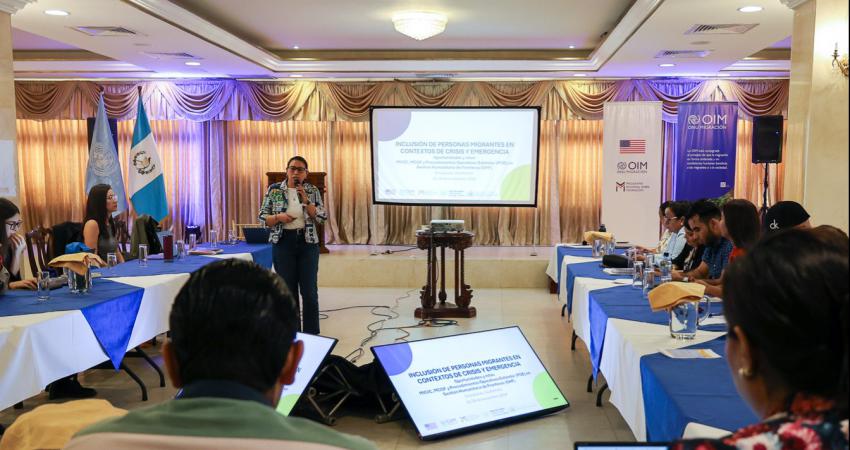IOM, OHCHR and UNODC Join Efforts to Strengthen Humanitarian Border Management in Mexico and Central America

NOVEMBER 2024. ESQUIPULAS, GUATEMALA: In 2023, more than 500,000 migrants entered the Central American region through Darien in Panama, a figure that exceeded the sum of the previous ten years combined. This increase in migration flows poses several challenges in terms of human rights protection, border management and security, as well as in tackling transnational crimes such as human trafficking and migrant smuggling, especially in crisis contexts.
In this context, the International Organization for Migration (IOM), in collaboration with the Office of the United Nations High Commissioner for Human Rights (OHCHR) and the United Nations Office on Drugs and Crime (UNODC), is carrying out actions aimed at border management. The objective is to provide the necessary capacity-building for governments to improve their preparedness and establish adequate response mechanisms in case of massive and sudden flows of migrants, protecting border crossers while ensuring the maintenance of national security.
In the framework of this inter-agency effort, a joint training on this topic was held in the city of Esquipulas, Guatemala, from 25 to 29 November 2024. Twenty-two public officials responsible for border management from Mexico, Guatemala and Honduras participated in the event, which included theoretical content, practical tools for their work and knowledge of operational procedures developed by the Guatemalan authorities in Esquipulas. A field visit allowed them to learn first-hand about the public, private and non-governmental organizations that are part of the response to migrants in transit.
Follow-up actions include the strengthening of consular assistance networks, the coordination between institutions and organizations for the local response, and the exchange of good practices for migrants in transit. Participants highlighted the need to continue strengthening joint training between countries, as the lack of knowledge of mechanisms for managing migration flows can pose a challenge to perform humanitarian assistance at the border.
This effort is directly linked to the implementation of the Global Compact for Safe, Orderly and Regular Migration, particularly addressing and reducing migration vulnerabilities (goal 7) and managing borders in an integrated, secure and coordinated manner (goal 11). The activity was coordinated by IOM's Western Hemisphere Program (WHP), funded by the U.S. Department of State Bureau of Population, Refugees and Migration.
